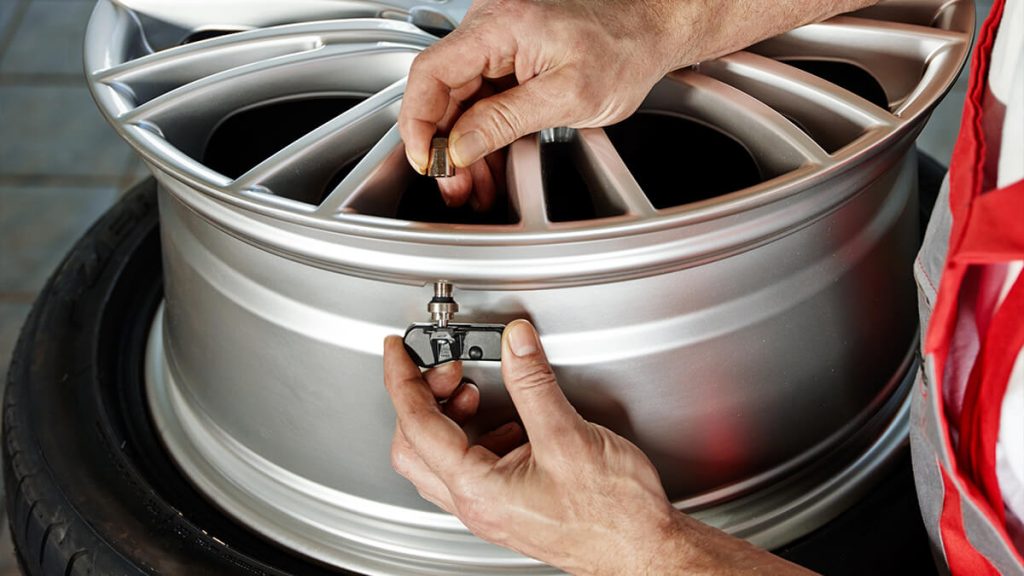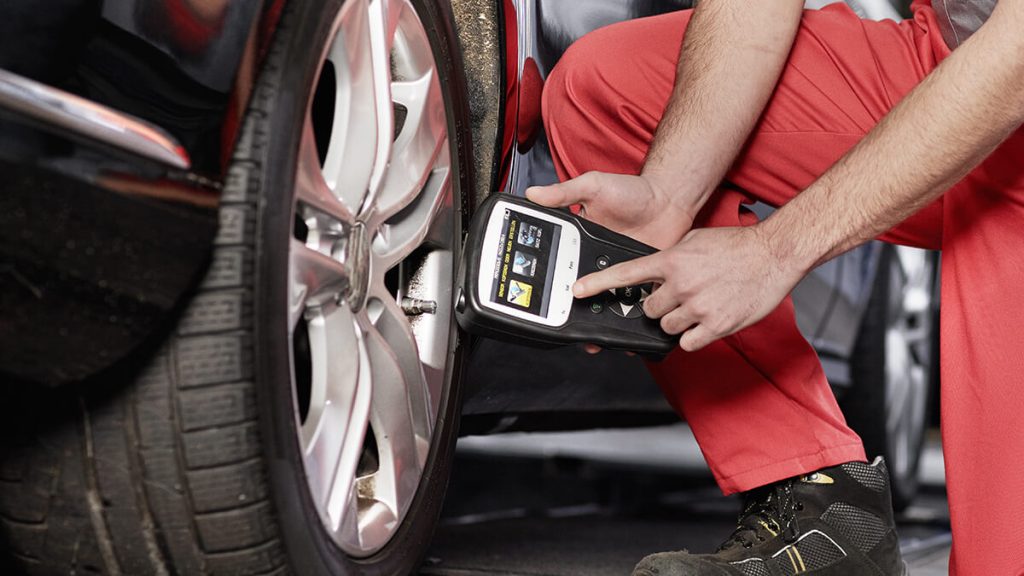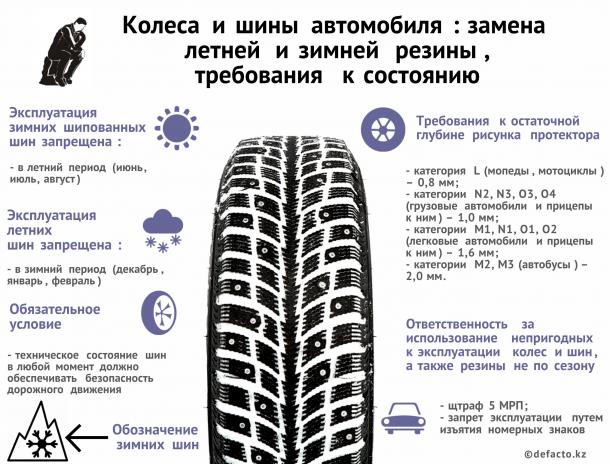
How do tire pressure sensors work? Find out the most important information about TPMS
Content
Drivers forget about routine tire pressure checks. This is not only important for proper driving, but also affects the increased fuel consumption of the unit. That is why a few years ago a rule was introduced requiring the installation of appropriate measuring accessories, i.e. tire pressure sensors. How do these controls work?
TPMS tire pressure sensor - what is it?
From English Tire pressure monitoring system is a set of tire pressure monitoring devices mounted on wheels. It is valid within the European Union and North America. Every machine produced there today must be equipped with such a system. The tire pressure sensor works in two ways. It is divided into direct and indirect measurement.
How do tire pressure sensors work?
The operation of a tire pressure sensor is quite simple. Depending on the version used, it can measure and show the driver the current pressure values in each wheel or report a sudden drop in pressure. This way you know which tire is leaking and you can determine the estimated time when you need to add air.
Tire pressure sensors - installation method
The air pressure sensor is mounted inside the wheel on the air valve or on the rim. Each wheel has a special sensor that transmits a signal by radio to the receiver or computer of the device. This way you get accurate values related to the current tire pressure level.
Changing wheels and tire pressure sensors

Drivers should always inform the installer of the presence of tire pressure sensors. Carelessness when changing tires means that air pressure sensors can be damaged and new ones can be expensive to install. In addition, when replacing devices installed on air valves, they must be calibrated. The on-board computer receives incorrect signals every time the disc in the car is changed. The same applies to the replacement of these accessories.
Indirect TPMS Features
Less cumbersome, but not as detailed, is the intermediate system. The tire pressure sensor, which works on this principle, calculates the speed, wheel diameter and number of revolutions. For its work, it uses ABS and ESP systems, thanks to which no additional elements are required in the wheels. This system works without pressure measurement, but is just as effective.
How does indirect TPMS work?
When the wheel is rotated by the additional systems mentioned above, the TPMS checks the wheel speed and measures the number of revolutions. A wheel with less pressure reduces its size and therefore makes more revolutions at the same vehicle speed. The system compares the number of revolutions of each wheel and signals any changes. More modern systems also monitor individual wheel vibrations during braking, acceleration and cornering.
What problems with the operation of the indirect tire pressure sensor indicate the driver?
First, the tire pressure indicator is not active and does not show the current air level. As a result, it can be calibrated to any pressure because you decide when to program the device. The sensor itself "does not know" what its correct level is, it is based only on the loss of air. If this value falls by at least 20% compared to the initial value, the system will notify you of the change with a signal.
However, the response time is also not very fast. At the moment of impact with an object that will cause a gradual loss of air, indirect TPMS takes some time to detect changes. For the next few minutes of driving, from the moment the puncture occurs until the sensor detects it, the driver drives with a steadily decreasing pressure. Once he receives such a message, he may not have time to get to the right place. The air in the wheel can be expelled in minutes.
Indirect air pressure sensor and tire type
The indirect air pressure sensor works fine only with standard tires. Therefore, any changes lead to the fact that the system will not work as efficiently. This is affected by the stiffness of the tires, and this is especially noticeable in more modern devices that also monitor tire vibrations. A situation that does not happen often, but can occur, is the loss of air from all wheels at the same time. While direct TPMS will record this information and let you know within a short time, indirect monitoring will probably not let you know at all. Why? Remember that all wheels are his touchstone, and he determines vibrations based on them. Since everyone is depressurized, he will not notice any malfunction.
Tire pressure sensor - maintenance

Of course, the vast majority of electronic devices are subject to periodic maintenance. Experts emphasize that keeping tires clean is a very important factor for air pressure sensors. Direct monitoring systems are sensitive to dirt, dust, dust and water. Therefore, they are often damaged. Very often, Renault Laguna II users complain about the ailment of incorrectly working and breaking sensors.
As you have probably noticed, the cost of changing tires is of great importance to you as a user. It is much better to have a second set of wheels with pressure indicators than to change tires on one set of rims. The tire pressure sensor may be damaged. An inattentive vulcanizer can cause a malfunction, and then you will have to pay more.
Tire pressure sensor replacement cost
Over time, the tire pressure sensor system can be discharged. Each sensor has a built-in battery with a lifetime. Therefore, in the end, he will refuse to obey. In such a situation, you need to be prepared to replace tire pressure sensors, and the cost of this undertaking can fluctuate in the region of several hundred zlotys. Of course, for one piece.
TPMS system diagnostics
When visiting a vulcanization plant, it is important not only to make a mandatory replacement of tires or wheels. It is important that the employee takes care of diagnosing the TPMS system. To do this, the strength of the signal sent, the condition of the batteries in individual sensors, the temperature and the exact measurement of pressure are checked. This way you can be sure that the system you have implemented in your wheels is working properly.
Disabling the tire pressure sensor
It may happen that, despite the correct tire pressures, the TPMS system will inform you of violations. It may take some time before you leave for your scheduled workshop visit, and the beep will constantly remind you of incorrect values. What can you do then? Jif the reason is really good, you can refer to the manufacturer's instructions and temporarily disable the tire pressure sensor. This is not possible on every car model, but you will learn about it by reading the relevant manual pages. However, remember that this system works for your safety and getting rid of tire pressure indicators is not a good idea.
A properly functioning tire pressure sensor is essential to ensure the highest level of safety for all road users. You will not immediately notice the loss of air. Proper tire pressure is especially important when cornering, driving fast on highways, on wet roads and in winter. Therefore, do not forget (if you do not have such sensors) check tire pressure more often. However, if you have one, make sure the tire pressure sensors are properly serviced, such as during regular visits to the tire shop.

